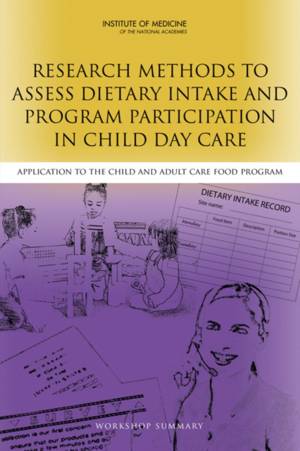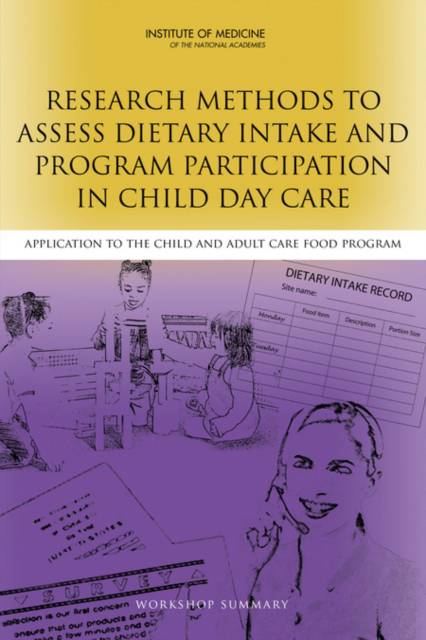
- Afhalen na 1 uur in een winkel met voorraad
- Gratis thuislevering in België vanaf € 30
- Ruim aanbod met 7 miljoen producten
- Afhalen na 1 uur in een winkel met voorraad
- Gratis thuislevering in België vanaf € 30
- Ruim aanbod met 7 miljoen producten
Research Methods to Assess Dietary Intake and Program Participation in Child Day Care
Application to the Child and Adult Care Food Program: Workshop Summary
Institute of Medicine, Food and Nutrition BoardOmschrijving
More than 16 million children in the United States live in food-insecure households where they are unable to obtain enough food to meet their needs. At the same time, a growing number of children are overweight or obese. Because of these challenges, improving child nutrition has emerged as one of the nation's most urgent public health needs. The Child and Adult Care Food Program (CACFP), a U.S. Department of Agriculture (USDA) food program, served about 3.3 million children in 2011, as well as more than 124,000 adults who require daily supervision or assistance. Since many children rely on CACFP for the majority of their daily food, the quality of foods provided has the potential to greatly improve the health of the children's diets.
The USDA asked the IOM to review and recommend improvements, as necessary, to the CACFP meal requirements in order to keep them aligned with other federally funded food assistance programs and with the Dietary Guidelines for Americans. The 2011 IOM report, Child and Adult Care Food Program Aligning Dietary Guidance for All, reviewed the program in detail and provided recommendations for improvement.
In February 2012, at the request of the USDA, the IOM conducted an additional workshop to examine research methods and approaches that could be used to design and conduct a nationally representative study assessing children's dietary intake and participation rates in child care facilities, including CACFP-sponsored child care centers and homes. Research Methods to Assess Dietary Intake and Program Participation in Child Day Care: Application to the Child and Adult Care Food Program Workshop Summary is the report that summarizes the workshop.
Specificaties
Betrokkenen
- Auteur(s):
- Uitgeverij:
Inhoud
- Aantal bladzijden:
- 106
- Taal:
- Engels
Eigenschappen
- Productcode (EAN):
- 9780309257312
- Verschijningsdatum:
- 20/08/2012
- Uitvoering:
- Paperback
- Formaat:
- Trade paperback (VS)
- Afmetingen:
- 152 mm x 229 mm

Alleen bij Standaard Boekhandel
Beoordelingen
We publiceren alleen reviews die voldoen aan de voorwaarden voor reviews. Bekijk onze voorwaarden voor reviews.











